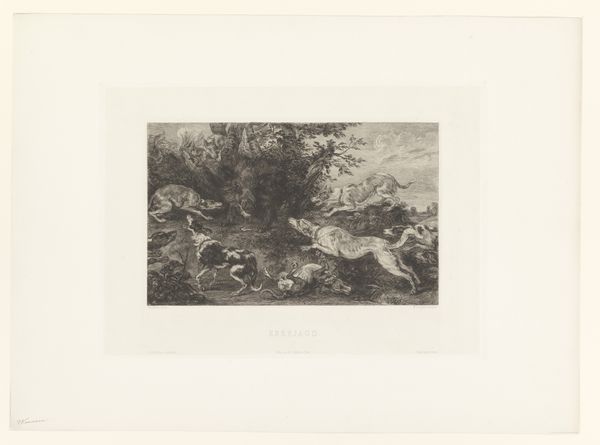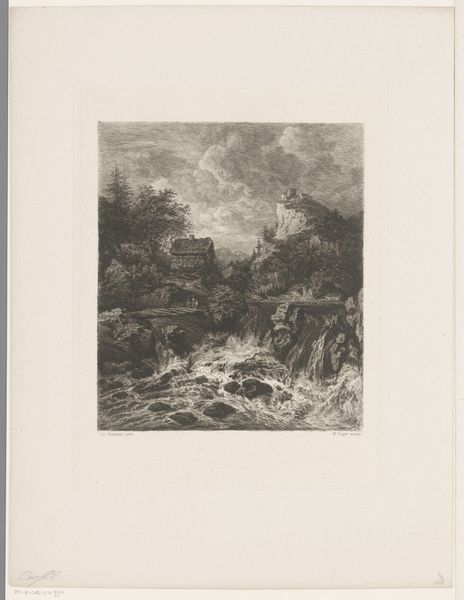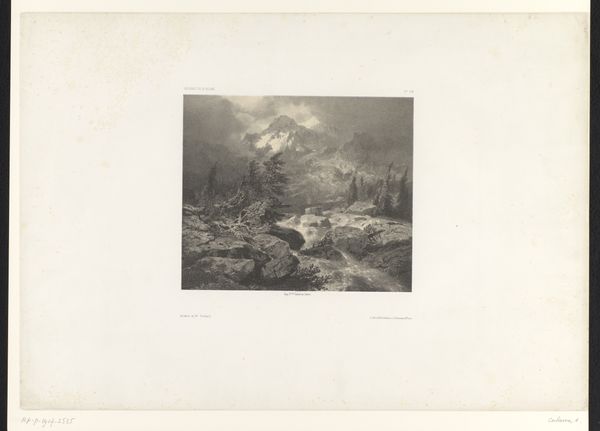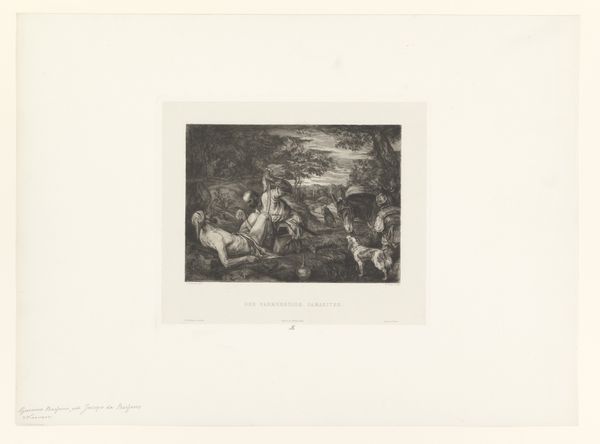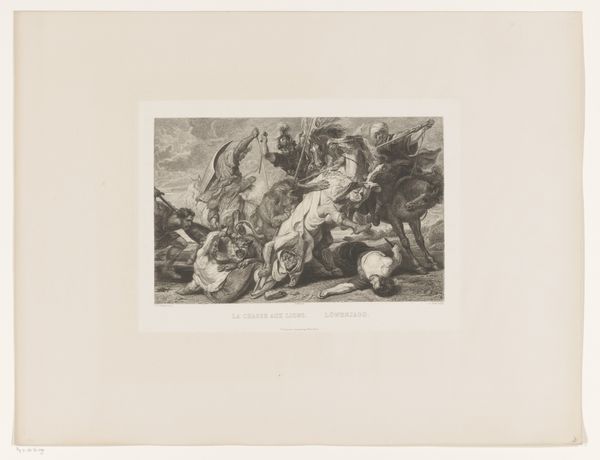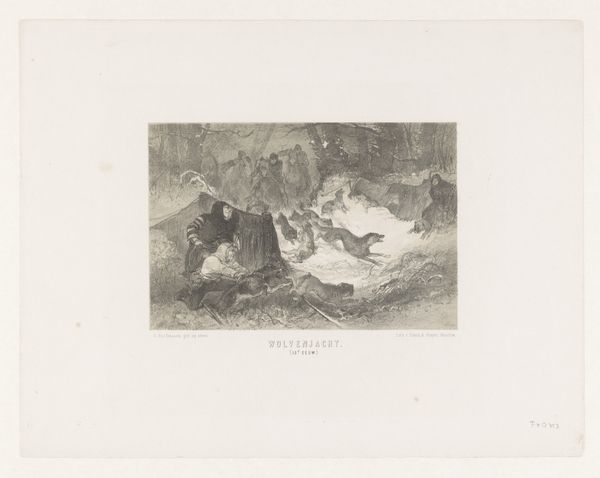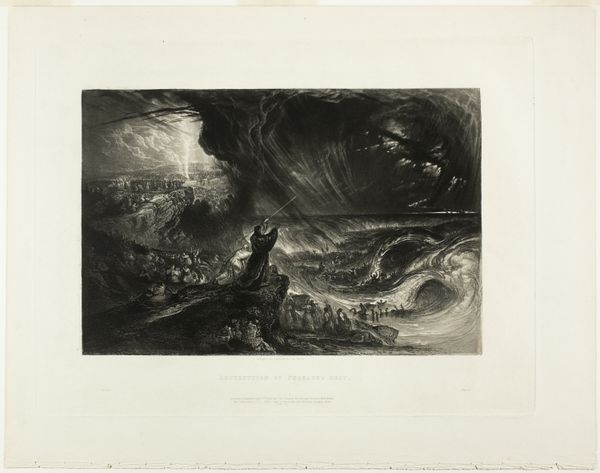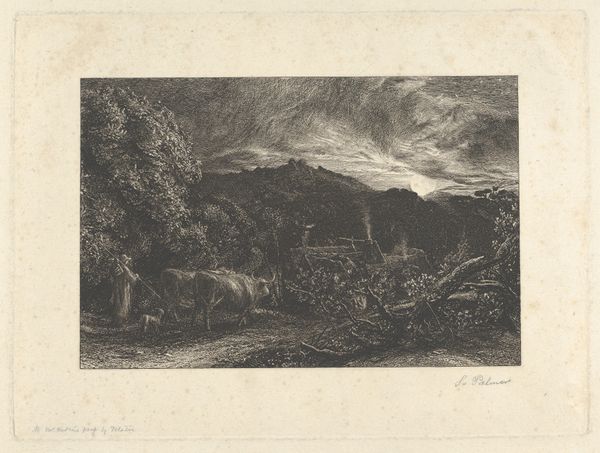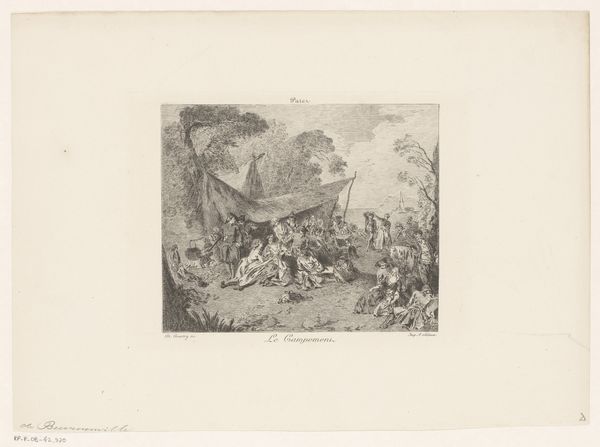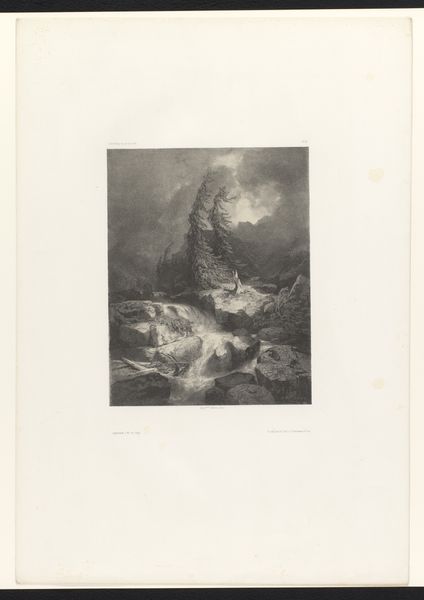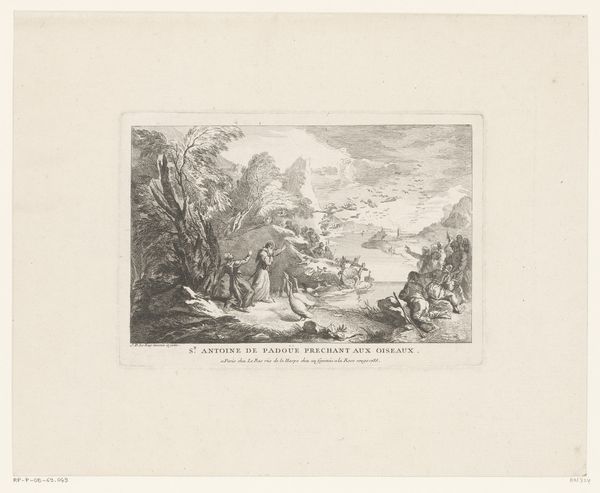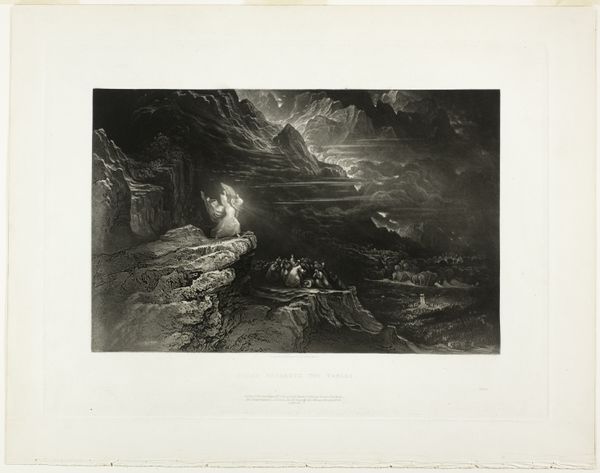
print, engraving
#
narrative-art
# print
#
landscape
#
figuration
#
history-painting
#
academic-art
#
engraving
Dimensions: height 296 mm, width 379 mm
Copyright: Rijks Museum: Open Domain
William Unger created this print of the Calydonian Boar Hunt in the late 19th century, deploying etching on paper. Unger was Dutch, and the subject matter originates from ancient Greek myth, so why might an artist from the Netherlands, working in the age of industrialization, be drawn to this distant tale? Perhaps we can understand this image as an exercise in the cultural politics of the late 1800s. At this time, the Netherlands, like other European nations, was consolidating its national identity. It’s important to remember that cultural institutions like museums and art academies played a crucial role in defining and promoting this sense of national identity. Unger, as a respected printmaker whose works were collected by institutions like the Rijksmuseum, was part of this process. We can hypothesize that, in representing the Calydonian Boar Hunt, Unger gestures toward an ancient European cultural identity, one shared by various national audiences. More research into Unger's career, the collecting habits of institutions, and the artistic trends of the time, would help us flesh out this hypothesis.
Comments
No comments
Be the first to comment and join the conversation on the ultimate creative platform.

